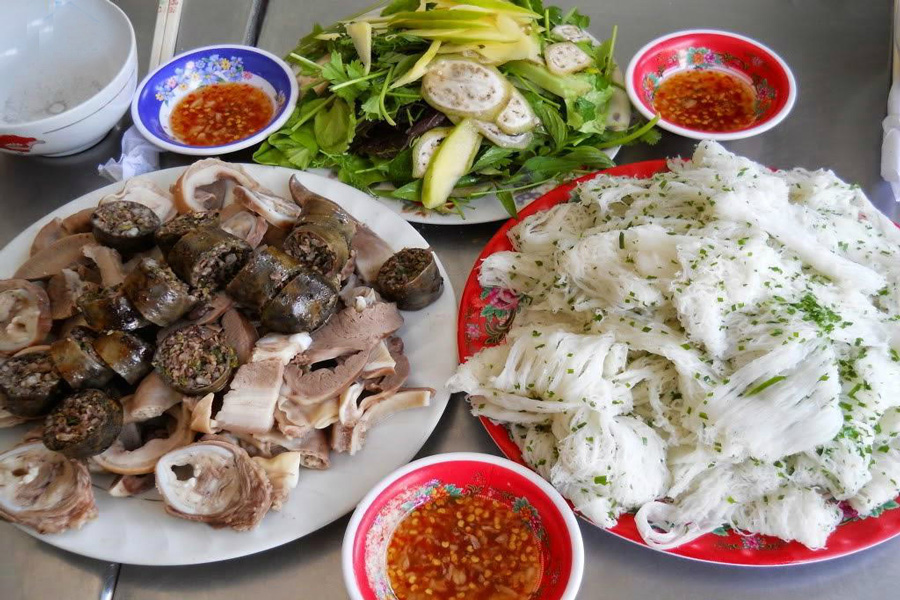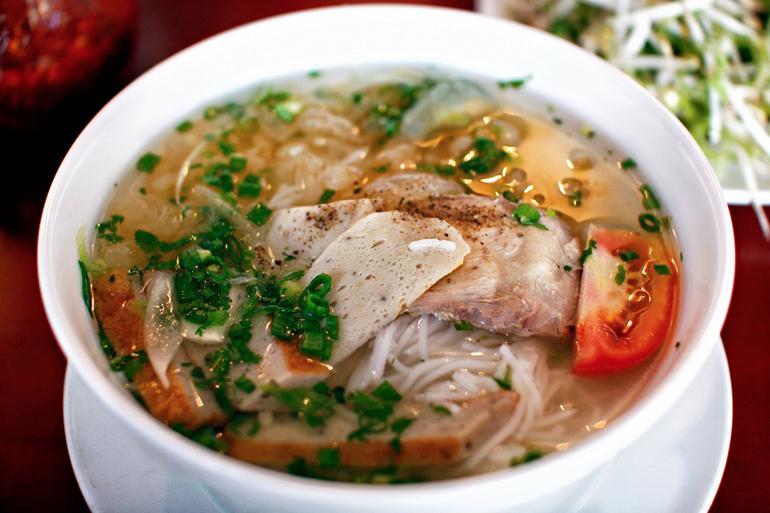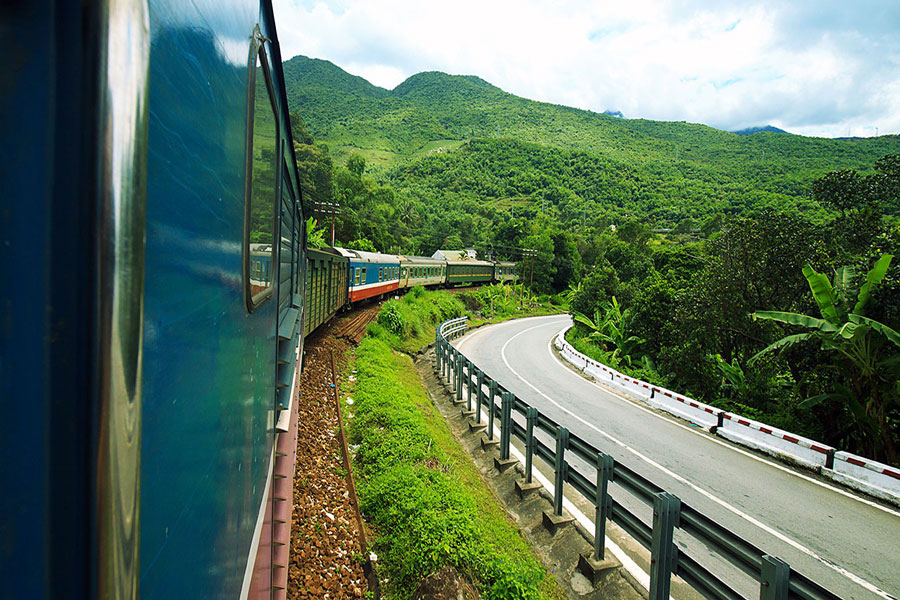
Quy Nhon
How to travel to Quy Nhon for your best experience
Quy Nhon Travel Guide – What to do, when to visit, and more…
Located in the Southern part of Vietnam, about 700 kilometers away from Ho Chi Minh City, Quy Nhon (of Binh Dinh Province) boasts a terrific beach-blessed shoreline and grand boulevards. In the past, the Cham people occupied this region and a vast area of southern Vietnam prior to the arrival of the Viet people in the 15th century. Nowadays, though being less popular than other most-visited beaches in the Center, but Quy Nhon has its own charms and undiscovered sights that will blow your mind. Tired of bustling cities and touristy towns? Let’s hop on a bus to get away and get ready to be wowed by crystal-clear waters, ancient ruins, friendly locals, and mouthwatering seafood delicacies.
Frequently asked questions

Located in the Southern part of Vietnam, about 700 kilometers away from Ho Chi Minh City, Quy Nhon (of Binh Dinh Province) boasts a terrific beach-blessed shoreline and grand boulevards. In the past, the Cham people occupied this region and a vast area of southern Vietnam prior to the arrival of the Viet people in the 15th century.
Nowadays, though being less popular than other most-visited beaches in the Center, but Quy Nhon has its own charms and undiscovered sights that will blow your mind. Tired of bustling cities and touristy towns? Let’s hop on a bus to get away and get ready to be wowed by crystal-clear waters, ancient ruins, friendly locals, and mouthwatering seafood delicacies.
1. Chilling at stunning beaches
Quy Nhon’s highlight is the beautiful beaches that run along the 42km long coastline from the eastern edge of town in a gently curved bay, in which metamorphosis looks promising without any of the hustle or crowds. Surrounded by lush green hills, sheltered by trees along the side, these beaches are noteworthy clean, rubbish-free with clear and turquoise waters giving the breathtaking vista for visitors. You may consider the list below into your itinerary when visiting the most beautiful beaches in Quy Nhon.
Bai Xep Beach
This unspoiled beach is near the small fishing village named Bai Xep, thus it is called by that name. Bai Xep allures people with its turquoise-blue ocean carousing the white sand beach and a quiet village within a few steps. It is recommended to arrive at Bai Xep before the sunrise to enjoy the first light of the day coming from the calm blue sea.
Genh Rang Beach
As a part of the Vung Chua Mountain that protrudes to the sea, this beach is bound by rock cliffs and blue ocean with a care-free feeling. It is also the second beach in Quy Nhon that is famous for egg-shaped stones right alongside the sandbank.
Queen’s Beach
Like Genh Rang Beach, it is also characterized by the egg-shaped stones on the beach. It’s a few minutes away from the center in Han Mac Tu Memorial Park. As it is quite far from the city center, it is an ideal place for camping and enjoys the tranquility of Quy Nhon.
Da Dia Beach
Stretching south of the cliffs, Da Dia is a gorgeous sweep of sand. It’s good for bathing, and there are a few foods and drink shacks along its shores. North of the cliffs, a paved pathway leads across a grassy, boulder-strewn coastline to a Ganh Den Lighthouse. An attractive and peaceful spot with views over the bay, this has become a selfie-trap for many young Vietnamese travelers.
These beaches with an endless strip of soft sand and amazing views are tranquil and inviting, making it the perfect place to stay if you want to chill out and get a tan.
2. Exploring Ky Co Island
You may take a canoe to Ky Co, the untouched and least touristy island of Quy Nhon. Ky Co is surrounded by the ocean on one side, and the gorgeous mountain on the other. This remote, secluded place has wonderful beaches and crystal-clear waters which is also referred to as “the Maldives of Vietnam”. Ask your canoe driver to look for a diving spot to see corals before heading off to the crowded beaches. There are several hidden beaches and cafes to laid back in Ky Co as you walk along the shoreline, passing through mountain cliffs.
3. Catching the sunrise at Windy Pass
Windy Pass, a curvy shoreline about 20 kilometers away from Quy Nhon, is where rocky structures meet the sea and stretch out into the water, creating a marvelous landscape especially when the sun sets or rises. This is a place for adventure lovers as bathing on this beach interwoven with large rocks and stone pebbles can be challenging. Even if you can’t swim here, it’s a great place to enjoy the beauty of nature and catch a cool breeze. Also, don’t forget to hike up the mountains to see the biggest female Buddha statue of Quy Nhon, and stop by Nhon Ly fishing village to witness the daily lives of fishermen.
4. Sandboarding in Phuong Mai
Phuong Mai sand dunes which are a vast expanse of sand that keeps changing its shape due to the sea-winds blowing from the beaches. Local operators offer the equipment if you want to try sliding down the dune. If not, you can test your strength by trying to climb one of those dunes. It can be an arduous task, especially during summers. However, the final reward – breathtaking views of the endless sea merging into the horizon, is totally worth the effort.
The sand dunes are quite hot in the day time so the best time to visit is just 30-40 minutes before sunset and after it.
5. Discovering Thap Doi (Twin) Towers
As Binh Dinh is the Vietnamese province with the highest number of Champa-era ruins, you won’t be surprised that there is an impressive tower in the heart of the city. This pair of Cham towers sit within the city limits in a pretty park. Steep steps lead up to the temples, which are open to the sky. Atypically for Cham architecture, they have curved pyramidal roofs rather than the usual terracing. The larger 20m-tall tower retains some of its ornate brickwork and remnants of the granite statuary that once graced its summit. The dismembered torsos of garuda (half-human, half-bird) can be seen at the corners of the roofs.
6. Taking a sacred tour to the Buddhist temples
For those of you looking for greater peace of mind, Quy Nhon is home to a number of Buddha temples. Some of these like Minh Tinh, Hien Nam, and Long Khanh, are located in the heart of the city, whereas some others like Pho Minh, Tam An Tu and some others are located a little away from the city center. Among those, Long Khanh is a large temple that was first constructed in the early 18th-century, wherein housing a statue of Avalokitesvara which is basically a Bodhisattva who embodies the compassion of all Buddhas.
7. Visit local markets
Markets are always a great place to learn more about the daily life of local people. Stop by one in Quy Nhon to find out what kind of seafood is most popular, pick up a few new types of tropical fruit and try freshly prepared Vietnamese food.
If you’re looking for a good place to have seafood, markets are your best shot as this is where many families will buy their food or come to have a meal together. Take some time to walk around, check the catch of the day and choose something to try. Negotiate the price before you have your food prepared to avoid unpleasant surprises and get ready for some of the best seafood you’ve ever tried.
Pristine beaches, interesting sites, historical landmarks… all these and more are at home in the little town of Quy Nhon, and a 2-day itinerary will allow you to discover the most of sight-seeing and experience favorite activities to the fullest.
Day 1: Ky Co Island – Thap Doi (Twin) Towers – Windy Pass
AM: Arrive Ky Co Island in the early morning by canoe. Enjoy scuba diving, swimming and sunbathing. Have lunch with fresh seafood. Then get back to land to visit the Twin Tower to learn about Cham history and heritage.
PM: Head to Windy Pass in the afternoon to visit Nhon Ly fishing village and enjoy the sunset. Then back to town for light hiking and local market visiting in the evening.
Day 2: Bai Xep Beach – Phuong Mai sand dune – Long Khanh Temple
AM: Get to Bai Xep Beach and have a great time in the morning enjoying soft sand with clear water. Play your favorite watersport then have lunch by the beach.
PM: Move to Phuong Mai sand dune to experience sandboarding and get some fantastic photos. Then visit Long Khanh Temple in the late afternoon as the last destination.
If you are a veteran backpacker, please feel free to manage the trip on your own and alter it when needed, else, we recommend you join a tour organized by a professional company, that can free you from hassles and keep you safe throughout the journey.
Banh Hoi Chao Long (Thin Vermicelli served with pig intestine or roasted pork)
This dish is the most authentic dish in Quy Nhon. It doesn’t look like any noodle or vermicelli dish in Vietnam. It is served with boiled bean sprouts, basil, salad, and coriander together with a bowl of porridge and special dipping sauce which is made from fish sauce, sugar, garlic, lime juice and finally, chili pepper. In some restaurants, instead of pig intestine, people eat it with roasted pork.
Banh It La Gai (Pyramid-shaped sticky rice sweet wrapped in ramie leaves)
It is a local cake made from sticky rice, coconut flesh, peanut, green beans, and ginger then wrapped in ramie leaves. After being boiled, it gets black soft skin. Local markets sell the tastiest Banh it la gai so if you visit one, bring home some.
Banh Xeo Tom Nhay (“Jumping” shrimp pancake)
This is one of the many specialties of Quy Nhon’s cuisine. “Jumping” is used to describe the freshness of shrimp in a pancake, which lies on top of the golden pancake. Unlike the rice pancake in the south, the pancake here is just the size of a fist. It is very thin and has shrimp, bean sprout and onion on top. It is served with a bowl of dipping sauce made from pure fish sauce and spices. To eat the rice pancake, you can roll it up with sprouts, cucumber and star fruit.
Bun Cha Ca (Fish cake noodle soup)
The main ingredient in the dish is the fish cake. In Quy Nhon, the fish cakes are made from various kinds of fish like barracuda and mackerel. The broth is cooked from fish bones, usually those of mackerel and flagfish, because of their sweetness. The soup should not have a fishy flavor. Many stalls serve the dish with chili sauce.

The best time of year to visit the coast of Phu Yen Province and the beaches around Quy Nhon is from March to September. During these months the weather is usually clear, dry, hot and sunny: the kind of weather you expect on a tropical beach. The seas are also calmest at this time of year, making it perfect for swimming. The months from October to February can be windy, wet and surprisingly bleak. The seas can be rough, and this region sometimes lies in the path of typhoons coming in from the east during October and November.
By coach: There are several buses depart for Quy Nhon from both Ho Chi Minh City and Hanoi every day, but the journey is quite long, which is about 15-18 hours traveling. However, it’s the most budget-friendly option that costs around VND300,000.

By train: A great choice for you to enjoy wonderful views of the countryside along the way, which travel faster than the coach, within 8-9 hours. Fare is around VND1,400,000.

By air: If you are coming from Hanoi or Ho Chi Minh City, you can fly into Phu Cat Airport with any of the main airlines (Vietnam Airlines, VietJet, Jetstar Pacific). Prices are inexpensive but vary upon seasons.
Throughout this article, we wish you to have an idea of how to travel to Quy Nhon for your best experience. In case you are looking for your own travel agent, who can offer a wonderful and hassle-free trip to Phu Quoc, please feel free to let us know. We always commit our best to make it your once-in-a-lifetime journey.
 France
France  Spain
Spain  German
German  Italian
Italian 

 Vietnam Tours
Vietnam Tours  Cambodia Tours
Cambodia Tours  Myanmar tours
Myanmar tours  Thailand Tours
Thailand Tours  Laos Tours
Laos Tours